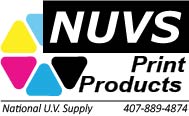MENU
Screen Printing Emulsion
Dual cure emulsion 6000G is a diazo/photopolymer (dual cure) type emulsion designed to be compatible with both solvent and water based systems.
• Excellent for use with water thinnable U.V. and water based graphics inks.
Excellent for use with water thinnable U.V. and water based graphics inks.
• Entirely suitable for use with conventional U.V. inks, textile printing and commercial applications.
Entirely suitable for use with conventional U.V. inks, textile printing and commercial applications.
• Exhibits outstanding resolution and definition qualities while offering high abrasion resistance.
Exhibits outstanding resolution and definition qualities while offering high abrasion resistance.
• Has solids content of 37% (sensitized), is extremely resistant to humidity.
Has solids content of 37% (sensitized), is extremely resistant to humidity.
MESH PREPERATION: It is extremely important to clean and degrease the screen mesh prior to each application of 6000G. Oils and grease from transportation or storage, residual contamination from inks and cleaning chemicals and general shop dirt can greatly interfere with consistent, smooth coating and increase the chances of stencil breakdown later on.
Ink stains on the mesh can be removed with NSC Haze/Ghost Remover. This non-caustic, water-soluble liquid is specially formulated for use with all types of inks. NSC Degreaser helps eliminate the problems caused by screen mesh contaminants on all types of fabric. It safely controls water hardness and cleans water hardness and cleans unwanted residue such as oils, grease, dirt, and dust. The screen should be rinsed well with water and allowed to dry completely before proceeding with coating.
SENSITIZING: Diazo sensitizer is supplied with each container of 6000G. Add water to ¾ of a bottle full, replace the cap and shake well to dissolve the diazo. After the diazo is completely dissolved, pour the mixture into the emulsion. (Use a small piece of screen printing mesh as a filter to eliminate any undissolved diazo particles while adding the diazo solution.) Stir well for 10 minutes to thoroughly disperse the diazo into the emulsion. Cover and let the sensitized emulsion stand for 2 hours to allow air bubbles to disappear.
COATING: The use of a sharp edged coater is preferred, unless the coating is required to be thick, such as on a 110 mesh or under.
• Using a clean, dry coater, apply one coat of 6000G to the print side of the screen. Rotate the screen 180 degrees and apply one coat of 6000G to the squeegee side.
• For optimal build up on course meshes (110 and under), apply one coat of 6000G to the print side and one coat to the squeegee side. Allow the screen to dry print side down. Then apply 2-3 very thin coats to the print side to build on the desired thickness, if necessary.
DRYING: Dry the coated screen in a clean, light safe area in a horizontal position print side down. Thorough drying of the coated screen is very important. The following conditions will help facilitate and insure complete drying:
An enclosed screen drying cabinet with heated airflow is very helpful in obtaining and sustaining these conditions, as well as keeping your screens free of contamination.
EXPOSURE: The following exposure table should be regarded as guideline only. The use of the CSC Exposure Scale is recommended to determine the proper exposure time.
EXPOSURE TABLE:
All exposure times listed below are established using a 5000W metal halide lamp at 40”, 15.5mWcm/2 output below the vacuum glass. The emulsion thickness being 15 microns. Nanometers of spectral peak output: 350-410 nm.
MESH APPROXIMATE TIME
APPROXIMATE TIME
110 S White 2-1/2 minutes
2-1/2 minutes
220 T Yellow 2-1/2 minutes
2-1/2 minutes
225 T Yellow 2 minutes
2 minutes
300 T Yellow 1-1/2 minutes
1-1/2 minutes
390 T Yellow 1-3/4 minutes
NOTE: It is very important that your exposure is performed with a light source that was specifically developed for screen printing. Exposure time can vary depending on the nanometer output of the light and distance from the vacuum frame.
WASHOUT: The image should be washed out using a cold water spray. Wet the stencil completely on both sides. Let it stand for 30 seconds. Wash the image area from the print side until it is clear of unexposed emulsion. Turn the screen around and rinse the squeegee side to remove any residual unexposed emulsion. Blot the screen and frame with a chamois to remove any excess water. Dry the screen in a horizontal position.
RECLAIMING: Scrape all excess ink from the screen. Remove ink residue with a suitable solvent. Flush the screen ink water. Apply NSC emulsion remover or diluted NSC concentrated stencil remover to both sides of the stencil remover to dry on the screen. We recommend the use of a high pressure washer to remove all stencil residue from the mesh.
STORAGE AND HANDLING In an unsensitized state 6000G should be stored in a cool (under 70 degrees) and dry area. After sensitizing, the emulsion kept under the same conditions has a shelf life of approximately 2 months.
COATEDSCREENS: Coated screens have a shelf life of up to one year when kept under the following conditions (in a light safe area): 59 to 77 degrees F (15 to 25 degrees C) 40% to 50% Relative Humidity
We also recommend that an exposed coated screen that has been stored under the above conditions over 2 hours be placed in a drying cabinet for a few minutes prior to exposure.
Please contact our Customer Service Department for further information
Emulsion Screen Printing Supplies







